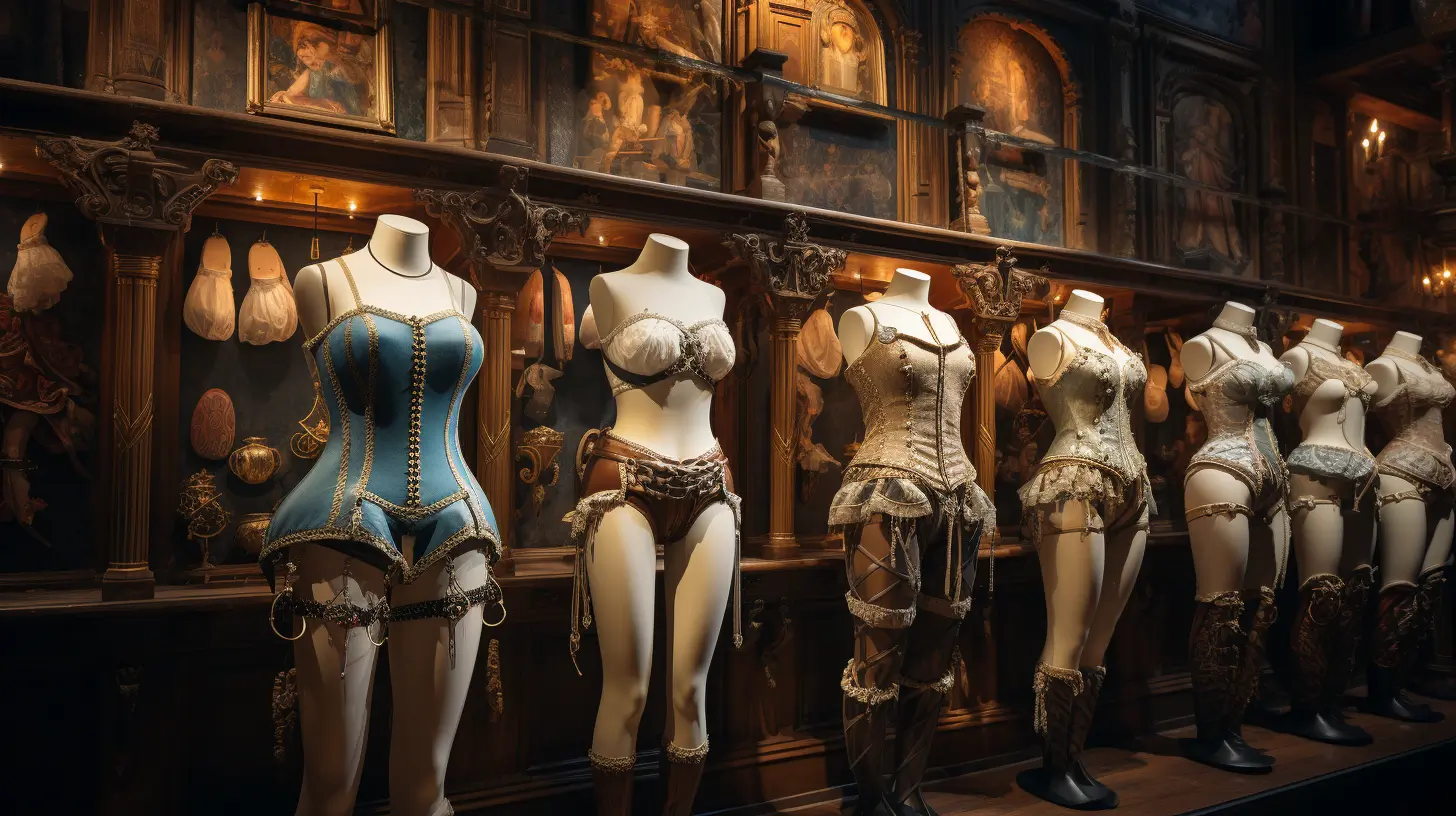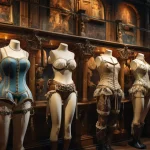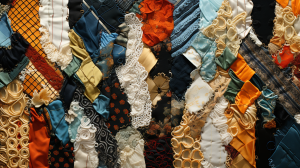
Hidden Splendor: Unveiling the Undergarments of the Renaissance
Imagine strolling through the cobbled streets of Florence or Venice during the Renaissance. You’re surrounded by a world where art and human ambition converge, a realm vibrating with creativity and social change. It’s a time when fashion isn’t just clothing; it’s a declaration, a bold statement etched in the fabric of society. But there’s more to this story, hidden beneath the layers of lavish gowns and ornate doublets.
Renaissance Undergarments – these words evoke images of intricate lace and structured corsets, but they tell a story far deeper than mere fashion. They are the unsung heroes of the Renaissance wardrobe, the silent architects shaping the era’s iconic silhouettes. They whisper tales of social norms, gender roles, and cultural shifts, all sewn into their seams.
In this journey, we’ll peel back the luxurious outer layers of Renaissance attire to reveal its secret underpinnings. We’re not just talking about clothing here; we’re uncovering a narrative woven into the very fabric of Renaissance life. Let’s embark on this exploratory odyssey, where each stitch and lace unravels a piece of history, echoing the voices of the past into our modern world.
The Essence of Renaissance Fashion
Opulent Exteriors
As we meander through the Renaissance era, it’s impossible not to be captivated by the extravagant attire that graces every corner of this historical canvas. The clothing is not just fabric; it’s a tapestry of wealth and status. Vivid colors, luxurious materials, and elaborate designs were the order of the day, each piece a masterpiece reflecting the wearer’s place in the societal hierarchy.
The Role of Undergarments
But what’s a painting without its canvas? The undergarments of this era were the unsung foundation, the unseen sculptors of the era’s iconic shapes. Corsets cinched, chemises softened, and breeches supported, all working in silent harmony to create the celebrated silhouettes of the Renaissance. Without these hidden layers, the celebrated gowns and doublets would lose their dramatic flair.
Cultural Reflections
In this dance of fabric and form, each undergarment tells a story far beyond mere functionality. They were the subtle reflections of a society in flux, a culture grappling with the boundaries of gender, class, and beauty. The cut of a corset or the length of a chemise wasn’t just fashion—it was a statement, a piece of the cultural puzzle that was the Renaissance.
Corsets: More Than Just a Cinch
Design and Evolution
The corset, a garment often synonymous with the Renaissance, is a marvel of design and functionality. Its evolution over the years mirrors the shifting aesthetic and practical needs of the time. From rigid iron to whalebone, the materials used in corsets were as varied as they were innovative, each iteration bringing a new dimension to the female silhouette.
A Symbol of Status
Beyond their structural role, corsets were potent symbols of status and femininity. Wearing a corset was not merely a fashion choice but a societal expectation, a marker of refinement and propriety. The tightness of a corset, the intricacy of its design, all spoke volumes about a woman’s social standing and her adherence to the beauty ideals of the time.
Corset Controversies
However, the corset was not without its controversies. Discussions raged about the health implications of tight-lacing and the restrictive nature of corsets on women’s bodies and freedoms. These debates were not just about comfort or health; they were deeply entwined with the era’s views on gender roles and women’s place in society.

Linen, Lace, and Longevity: The Chemise
Utility and Elegance
The chemise, often overshadowed by its more structured counterparts, was a cornerstone of Renaissance undergarments. Made typically from linen, it served as a protective layer between the body and the more expensive outer garments. But beyond its utilitarian purpose, the chemise was a canvas for subtle elegance, often adorned with lace or delicate embroidery, adding a hidden layer of beauty.
Design Evolution
Throughout the Renaissance, the style and length of the chemise evolved significantly. Early in the era, they were longer and more conservative, but as fashion trends shifted, so did the chemise, with designs becoming shorter and more form-fitting. This evolution wasn’t just a fashion statement; it was a reflection of the changing attitudes towards female beauty and modesty.
Symbolic Significance
The chemise was more than just a garment; it was a symbol. In a time when outward appearances were paramount, the chemise represented the personal, intimate side of fashion. Its simplicity in contrast to the opulent outer layers spoke to a different kind of beauty, one that was more personal and less bound by societal expectations.
Breeches and Hose: A Man’s World Underneath
Men’s Hidden Fashion
In the realm of Renaissance fashion, men’s undergarments, primarily breeches and hose, played a crucial role. These garments, while less discussed, were essential in shaping the male silhouette of the era. Breeches, fitted at the waist and ballooning at the hips, combined with hose, which were often colorful and intricately patterned, created a distinctive look that was both practical and fashionable.
Societal Implications
These garments were more than just clothing; they were a reflection of a man’s status and position in society. The materials, colors, and fit of breeches and hose could indicate a man’s wealth, profession, and even his moral standing. In an era where appearance was closely tied to identity, these undergarments played a key role in the social fabric.
Fashion and Masculinity
The Renaissance also saw a complex relationship between fashion and concepts of masculinity. Breeches and hose, often tight-fitting and flamboyant, challenged and shaped contemporary notions of masculinity. Their evolution over the period reflects shifting attitudes towards male beauty and gender roles, offering a unique lens through which to view the societal dynamics of the time.

The Secret Language of Undergarments
Hidden Messages
Renaissance undergarments were not merely items of clothing; they were canvases for hidden messages and subtle symbolism. From the embroidery on a corset to the cut of a chemise, these garments often contained symbolic motifs and designs that conveyed messages about love, virtue, and even political allegiance. This secret language of clothing offered a discreet way to communicate personal and societal values.
Artistic Influences
The intricate designs and patterns found on undergarments were also reflections of the broader artistic movements of the Renaissance. Just as painters and sculptors of the era explored themes of beauty, nature, and humanism, so too did the creators of these garments. The artistic flair in these undergarments mirrored the flourishing creativity of the period, making them not just clothing but wearable art.
Personal and Political Statements
Undergarments in the Renaissance could also serve as vehicles for personal and political expression. The choice of materials, colors, and designs could subtly indicate a person’s affiliations, beliefs, or social commentary. In a world where overt expression was often constrained by societal norms, undergarments provided a discreet yet powerful means of self-expression.
The Modern Echo: Renaissance Influence Today
Legacy in Fashion
The Renaissance’s influence on today’s fashion is undeniable. Elements of corsetry, for instance, have made a resurgence in modern design, blending historical aesthetics with contemporary sensibilities. This fusion illustrates how the past continues to inspire and shape the present, with Renaissance undergarments providing a rich source of inspiration for designers seeking to blend classic elegance with modern flair.
Cultural Resonance
The cultural impact of Renaissance fashion extends beyond mere aesthetics. The era’s exploration of beauty, identity, and self-expression through clothing resonates with today’s fashion world. The Renaissance’s blend of artistry and personal expression in clothing continues to influence how we view fashion as a medium for personal and cultural storytelling.
Renaissance in Modern Attire
Specific trends inspired by Renaissance undergarments are evident in modern attire. The structured bodice, a descendant of the corset, is seen in many contemporary dresses and tops, while the flowing lines of the chemise find echoes in today’s lingerie and casual wear. Even men’s fashion, with its tailored trousers and patterned socks, nods to the breeches and hose of the Renaissance, showcasing how these historical garments have been reinterpreted and adapted for a modern audience.
As our journey through the hidden world of Renaissance undergarments comes to a close, we’re left with a profound appreciation for these garments’ role in shaping not only the fashion but the very fabric of the era. These pieces, often unseen yet pivotal, were more than mere clothing; they were statements of status, expressions of personal identity, and reflections of societal norms.
In examining the intricate corsets, delicate chemises, and bold breeches, we’ve uncovered a narrative that weaves together art, culture, and history. These garments tell a story of a society in transformation, grappling with ideas of beauty, gender, and status that continue to resonate in our modern world.
So, as we don the fashions of our time, let’s remember the Renaissance undergarments’ legacy. They remind us that what lies beneath the surface is often as rich and complex as the outward display, a hidden splendor waiting to be revealed.









